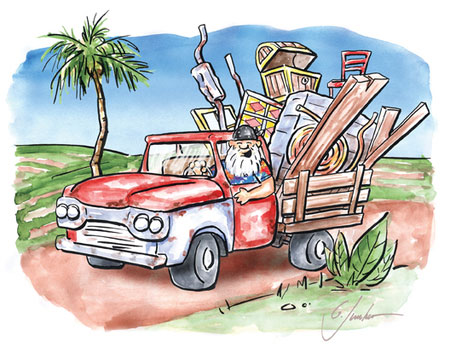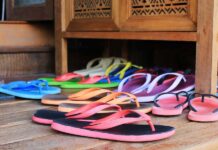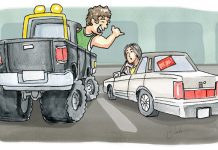Tom Stevens | Illustration by Guy Junker
 A modern recycling goal is to keep stuff out of the dump. The less trash in the landfill, the thinking goes, the better for our environment. Reduce, reuse, recycle!
A modern recycling goal is to keep stuff out of the dump. The less trash in the landfill, the thinking goes, the better for our environment. Reduce, reuse, recycle!
But back in the day, the Maui dump was recycling.
Or Maui dumps, I should say. There were many of them, unofficial and official.
Unofficial dumps arose wherever it was convenient to pitch opala (trash) without giving offense. And “arose” is the word. Over the years, small mountains of trash built up where rural roads ended, where military bases had stood, or simply where no one in authority looked very hard.
As recently as 1970, sprawling third-world-type dumps could be found where Maui Community College and Kanaha Beach Park are today. And one famous trash pile at the end of Makena Road grew so big it earned landmark status. The trash pile is gone, but even today Mauians surf the break called “Dumps.”
Back in the day, the county government maintained semi-official dump sites in Hana, Makawao, Pu‘unene, Lahaina and other far-flung districts. These facilities predated the “sanitary landfill” era, so the opala lay exposed, if jumbled, like a swap meet after an earthquake.
The up side was: if the supervisors were in a good mood and you didn’t go crazy, you could pick through a dump pretty much at will.
Many did. On any given dump business day, caravans of hippies, contractors, island families and new arrivals converged on the various sites like ants at a picnic. Some came to discard; some to discover; others to do both.
Back in those days, no spiky-wheeled bulldozers crushed the trash up for burial; no scary wood-chipping machines turned timbers into flying splinters. Instead, unwanted goods simply lay at the dump site for the elements to process. Sun, wind, rain, rust and termites would do their work, and the material would go back to whence it came.
“Natural recycling,” you might call it.
Of course, there were human recyclers, too, most notably at one venerable Upcountry site. Spilling down a deep gulch off Makani Road near Pukalani, the Makawao Dump was such a Disneyland of disposables it inspired its own song.
It was also a hotbed of early recycling on Maui. Patrons of the Makawao Dump could find Territorial-era art works and rattan living-room sets; vintage doors, windows and casements, all intact; tons of surplus lumber and construction materials. Entire houses were built and furnished from the Makawao Dump, and several antique stores found start-up inventory there.
A favorite dump character of the 1970s was the late Rainbow Kelly, a husky, white-bearded disc jockey, novelist and semipro athlete who scoured the Makawao Dump with a pirate kerchief bound snugly around his head. Rainbow would recover for barter or sale discarded valuables like copper wire, stained glass windows and auto parts. After a good day, his burdened pickup truck looked like an African bus.
Impressive as his dump business was, Kelly’s biggest recycling coup may have been the “reuse” of an abandoned military building at the old Kahului Airport. Sporting massive, salt-cured beams and handsome sash windows, the empty two-story structure was impeding airport growth.
Several contractors submitted bids to demolish the old building, but Kelly and his crew of itinerant hippie carpenters took a different approach: they bid zero. If they could salvage the lumber for their own use, Kelly proposed, his crew would dismantle the building for free, using no power tools.
They did, too. The demolition took several weeks, but when it was over, Rainbow’s band had enough lumber to build a commune in the Nahiku rain forest. In similar fashion, friends Bruce Turnbull and Ron Lau got permission in the late 1960s to dismantle and reuse an old Alexander & Baldwin sawmill ramp sited where Maui Mall is today. That wood built two big, big houses that still stand.
Things are generally less colorful today. Maui’s old walk-through dumps have been closed or reconfigured as landfills, and the hippies have been reconfigured as realtors. Recycling these days usually happens at generic green dumpsters in asphalt lots, not among the “hunky-backed trunks” of the old Makawao Dump.
Recycling now is more sanitary, but less fulfilling.





